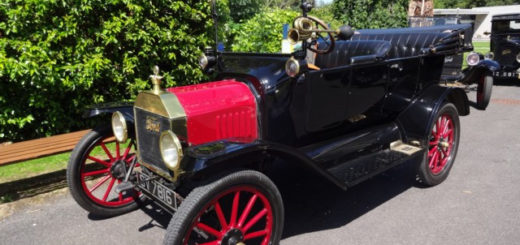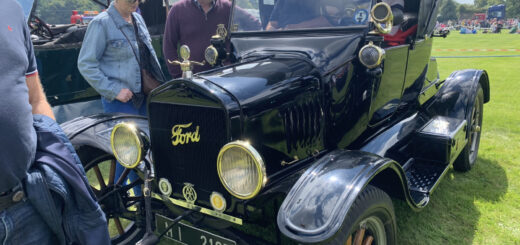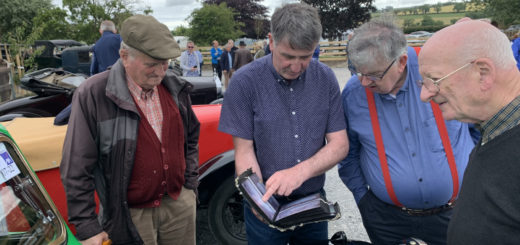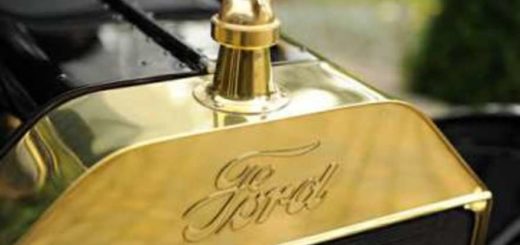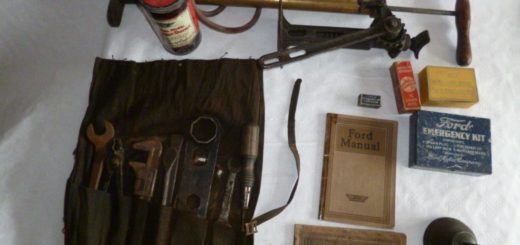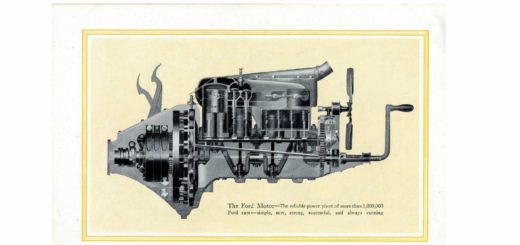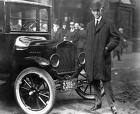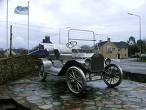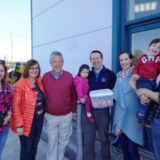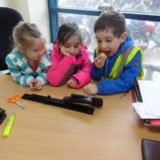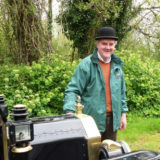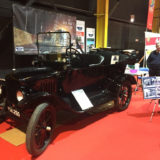Bandon: 18th June 2023
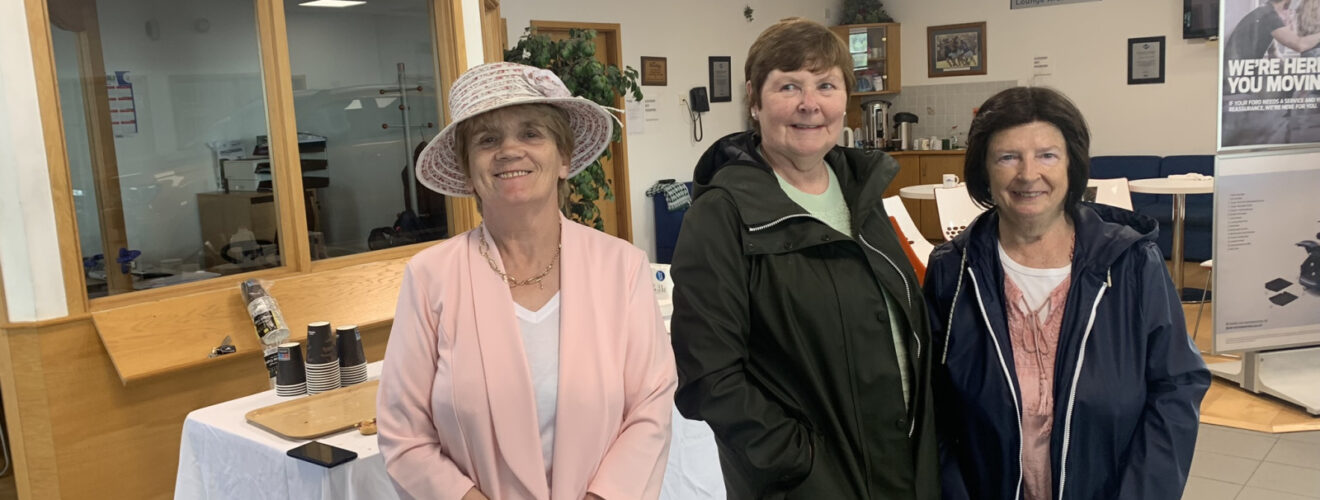
Our June West Cork outing was heralded by Bob and Catherine Clarke as being enjoyable and entertaining, although we would start off a little earlier and finish up a little later. Not a problem in the world as we are soon approaching the summer solstice, the longest day in the northern hemisphere, where homeward bound time is inconsequential. Because of the territory we were to cover of almost 60kms, on winding rural roads with loads of stops and time for lectures, it was important for the group to adhere to the written instructions and stay together, or so said Bob at the drivers’ briefing at 11:20 am.
As you will readily appreciate, there must have been something to delay the kick off by half an hour. Every time, over the past 20 years, our visits to this beautiful part of Ireland, in June, always reaped warmth and sunshine. This time yes, but after a bucketful downpour had its way in mid-morning. As we waited, we feasted on scones aplenty with strawberry jam and teas and coffees. We welcomed new members on their first outing with us with special attention to juniors who we encourage to accept an interest in Edwardian transport. Charlie, the Clarke pet, our mascot for the day, was out and about greeting the guests and receiving admiration from canine lovers’ present.
Our cavalcade began on the Michael Collins trail, covering as much as was feasible, along the actual roads and boreens travelled by the great Patriot on 22nd August 1922. We first passed by the Munster Arms Hotel in Bandon where a famous last photo of Collins was taken outside. Today, a black plaque outside the hotel marks the occasion of the last stop Collins made before he met his doom at Béal na Bláth. The very last photo of Collins, sitting in his car outside Bandon’s Munster Hotel, now hangs in the hotel lobby.
We caried on for 14kms to arrive at Michael Collins Memorial on L2011. Many of our readers will be familiar with Michael Collins Commemoration, an annual event which takes place at Béal na Blá (near the village of Crookstown in Co. Cork) to honour the memory of General Michael Collins, the Irish Revolutionary leader who was shot and died at this location on 22nd August 1922 at the age of 31. Almost 100 years after his death, scores of people, just like ourselves, continue to visit the monument at Béal na Blá every day to pay tribute to one of the leaders of Ireland’s struggle for Independence.
Cork County Council have made major changes to the roadway, removed the old railings and car parks and have created a large plinth suitable for many visitors to rest a while. Indeed a perfect backdrop for our group photograph. Our 21 Model T Cars and Commercials, of the time, made for an interesting line up, which clearly enthralled the many passers-by on this warm Sunday afternoon.
After another 30 kms or so, on the L4001 we arrive at Woodfield. Here we had an opportunity to open our picnic baskets and forage away in restful surroundings. President Paul Murphy paraded around with a modest birthday cake for a special date for Eleanor H, who kindly mingled through the picnic diners sharing her gift. This being a place in County Cork that is immersed in Irish history and folklore. Michael Collins was born on 16th October 1890 in a townland called Woodfield, right on our picnic location, situated between Clonakilty and Rosscarbery in West Cork. He was the son of Michael John Collins and Mary Ann Collins (nee O’Brien). Theirs was an unusual marriage in that Michael John was 61 years old when he married his 23-year-old neighbour.
The birthplace is open to the public all year round and there are information panels outlining the history of the site. It was once the Collins family homestead, until it was sold in 1923, with the farm. The site was opened to the public in 1990. Close to the entrance, is the footprint of a farmhouse that his mother built when he was ten. The Essex Regiment burnt it down during the War of Independence in April 1921. In the middle of the site there are three large trees, which mark the site of a barn that was also burned in 1921.
The building at the back of the site was the original dwelling house where Michael Collins was born, used later as a farm outbuilding. Time to wander around and take in the historical aspect of this part of our tour. Nearby but without stopping, we passed Four Alls Bar, an historic Premises located in the stunning countryside among the rolling hills of west Cork, at Sams Cross, Clonakilty Co. Cork. Maybe for some other day.
Time to go to our next stop, another 8 kms or so, via the town of Clonakilty to the Michael Collins Centre Museum, located on the Crowley family farm at Castleview near Clonakilty on the Wild Atlantic Way, really brings the story of General Michael Collins, Soldier, Politician, Statesman and relative of the Crowley’s to life. This award winning Museum was founded by Tim Crowley and his wife Dolores in 2000. Tim grew up on the family farm, the eldest of five brothers and was heavily influenced by a rich family history from the time of the 1916 rebellion, the War of Independence and Civil War and storytelling tradition.
Tim ending up working as farm steward in Darrara Agricultural College and in 1986 was one of the founders of the Lisnagun Ringfort restoration project on the college farm, which was opened to the public in 1991. Returning to work on the Family farm in 1993 and at that stage married to Dolores with a young family, the couple decided to set up a Museum and Heritage park on the farm with a strong emphasis on interpreting the life and times of their famous cousin Michael Collins. Tim Crowley for over a quarter of a century has also been taking visitors on Michael Collins and War of Independence tours to the many sites in West Cork where the history happened. We were fortunate to have him as our tour guide for the full day.
We were invited into his lecture hall where he spoke non stop with visual aides and artifacts of the history of the times and the death of the great leader. We were invited to inspect replicas of the touring vehicles built to scale of the ill fated convoy of 1922 comprising a Triumph Motor Cycle, a Troop Carrier, a Leyland Touring car and an Rolls Royce engine tank with a Vicars machine gun for the ready, all painted in the colours of the time, green, yellow and grey respectively.
A lot more can be written of this subject and the narration we had the pleasure of hearing from Tim Crowley. His enthusiasm for his chosen subject is electric and one’s imagination can easily be caught up in the plight that these people had to endure during the Troubles in Ireland at the time of the foundation of our State.
Our journey home in West Cork could not be without a quick stop and photo opportunity at the stainless steel replica situated at the village of Ballinascarthy, the home town of the Late Henry Ford, the man to whom Model T owners are grateful for presenting mankind with a revolutionary mode of transport in succession to the horse and cart or pony and trap.
Before we parted company and in the presence of our tour guide Tom and Dolores Crowley, our President called for order so that short speechmaking and presentations could be made. In appreciation for their generous hospitality, to include further helpings of delicious cakes and teas/coffees handcrafted by Delores and Una, a hand turned bowl of oak timber was presented to Tim. Tim duly responded. He was anxious to tell us a story about the motor cycle in his museum with grateful thanks to Patrick Dwyer whose expertise and knowledge came to the fore. He was for a long while trying to track down details of the bike.
Apparently, according to Pat Dwyer, it was a Triumph Model H, aged either 1913 or 1914, commonly used by British Army forces, and had a 2 ¾ Horse Power engine. It is interesting to note that the British Army vehicles had a stamp in the shape of an arrow on several parts, notably the magneto, the gear box engine casings. When he received the enquiry from Tim, he was in a position to hand over a Triumph Model H, of the correct year, but it was disassembled and in boxes of many parts. Tim was pleased with his find and in no time at all reassembled the whole unit and once completed, positioned it in pride of place in the museum. We were all very pleased to hear of this story, particularly as regards Patrick Dwyer’s involvement in it.
A surprise gift of a bowl from a piece of timber that was used as stepping stones on her washing line was made to Eleanor H on the occasion of her reaching a certain unmentionable age, where the assembly broke into song in the rhythm of the familiar happy birthday tune.
And finally, to our most gracious hosts, Catherine and Robert Clarke, the presentation of a hand turned piece of walnut into a bowl for them to keep as a memento of a superb day out for us all. Truly is was educational and enjoyable, just as was set out. The theme of their plan became a reality, for which we accepted with acclaim.
Thank you Catherine and Bob. We surely will return in even greater numbers!

